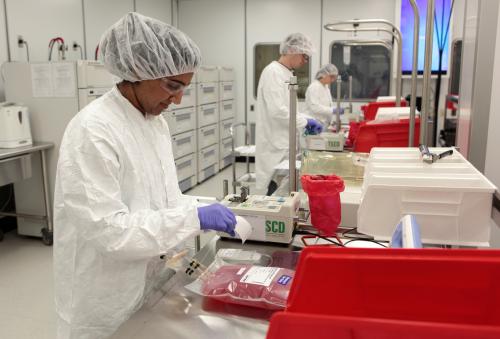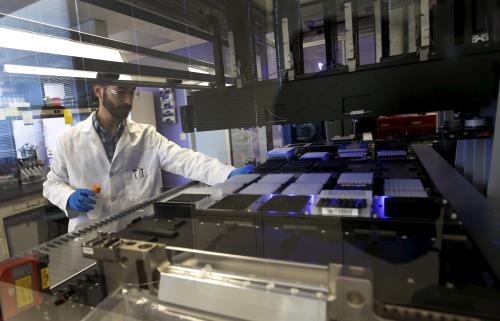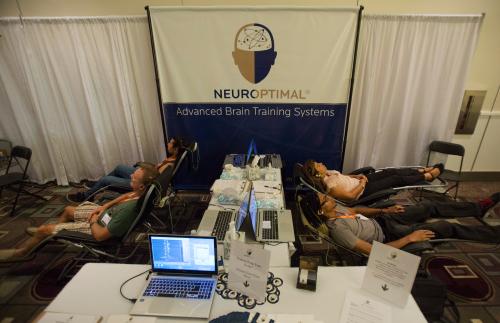Earth’s coral reef ecosystems are weathering catastrophic damage from all angles. Rising sea surface temperatures and ocean acidification are set to destroy more than 90 percent of coral reefs by 2050, and local anthropogenic stressors like development and pollutant runoff are driving the loss of keystone species such that many reefs will become algal swamps well before that date.
What we lose from coral reefs
Coral reefs are among the most valuable ecosystems on the planet. Not only are they important sites of cultural heritage and tradition, but they also provide crucial ecosystem services: freely protecting communities from coastal erosion, providing millions of fishing and tourism jobs, and untold calories, to 500 million people globally.
Local economies and cultures are wholesale subsidiaries of the ecosystems and services they tap into. Natural infrastructure contributes up to $145 trillion per year – but it is not bottomless. Ecosystems cannot withstand sustained stress without undergoing transformational shifts to less productive systems.
The ubiquitous decline of coral reefs makes them the first ecosystems to undergo wholesale collapse within a generation’s living memory. And they may not be the last—extinction rates lie somewhere between 1,000 and 10,000 times higher than the background rate, meaning up to 0.1% of all species could depart annually. Dramatic shifts in ecosystems will bring heavy turbulence to the social and economic fabric of formerly bio-abundant states and the regional economies they prop up.
With so much at stake out on the reef, the world’s marine biologists and coral scientists are evaluating a suite of technology development plans to buy enough time for adaptation, domestication or manipulation – at least until human behaviour patterns catch up. The options range from land-based coral giga-farms to seeding reefs with coral larvae, or physically shading reefs and pumping cooler water on them.
Biotechnology solutions
Also on the table is biotechnology, with corresponding proposals to develop genetically-resilient coral breeds. Potential projects involve identifying the genes of thermal tolerance and using that knowledge in selective breeding programmes or otherwise rapidly evolving corals and the algae that nourish them.
These approaches have been defined as synthetic biology. It is simplest to treat synthetic biology as a catchall term for the high-tech tools and principles that have allowed 21st-century biology to become an engineering discipline on top of its traditional role as the field that studies life. By combining predictive computer models, with a deep understanding of genetics (served up by DNA sequencing), alongside versatile molecular tools adapted from nature’s repertoire (among them CRISPR), ecosystems could be ‘patched’ by upgrading key organisms’ abilities to cope with catastrophic stress.
Revive & Restore, a conservation NGO is doing just that, promoting the application of a suite of genetic tools to pressing conservation problems. Tom Maloney, director of conservation science, explains
“Synthetic biology provides new optimism for conservation groups to stop the decline rather than just slow it down. A genetic toolkit can transform certain elements of the field by assisting more traditional conservation techniques like selective breeding, or can drive more aspirational projects like de-extinction. One can choose to work on foundational organisms themselves or address ecosystem-level problems.”
Countless species and ecosystems could benefit from synthetic biology besides coral reefs. Revive & Restore is successfully lobbying pharma companies to adopt a synthetic alternative to horseshoe crab blood currently used in biomedical research, and The American Chestnut Research and Restoration Project has developed blight-tolerant trees by inserting a single wheat gene to restore a habitat once common in North American forests.
These groups and others suggest that biotech tools can be successful in conservation settings, paving the way for countries to use synthetic biology techniques to prevent irreversible ecosystem transformation. However, even countries with advanced biotech capabilities have struggled to form sensible policies on past biotechnology use and governance.
Regulatory challenges
A historically broad range of applications for biotech has seen so many regulatory agencies compete to own the domain that there is now a highly fragmented and ever-ageing set of national governance regimes that often hinder sensible technology use. In the U.S., the Department of Agriculture, Food and Drug Administration, and Environmental Protection Agency all must weigh in on field trials. At the international level, the Convention on Biological Diversity’s Cartagena Protocol on Biosafety intended goals remain unenforceable thanks to loopholes arising from digitized DNA sequence data.
“The regulatory community doesn’t yet have frameworks for considering deployments of these tools,” says Dr Maloney. “We hold nature in the public trust and there is a very high standard that we need to bring to bear on this.”
To meet that standard, policymakers must engage their constituents and develop sensible and inclusive conservation technology policies. The foremost nature conservation organization, the International Union for the Conservation of Nature (IUCN), is already on the case, currently assessing how synthetic biology, gene drives, and genome editing technology could impact biodiversity preservation. We serve as members on the recently formed Task Force on Synthetic Biology and Biodiversity that will deliver a comprehensive technology assessment and policy position to serve as the basis of future international discussions.
This is a promising step forward, but the IUCN report will only help nations begin to prepare for an equally important internal discussions about whether to adopt synthetic biology for conservation at all. To usefully deploy biotechnologies, policymakers must learn to carefully navigate a completely different ecosystem—one made entirely of people, societies, laws and history—that is perhaps even more challenging than the science itself.










Commentary
Catastrophic risk to ecosystems puts biotechnology fixes on the table
May 31, 2018